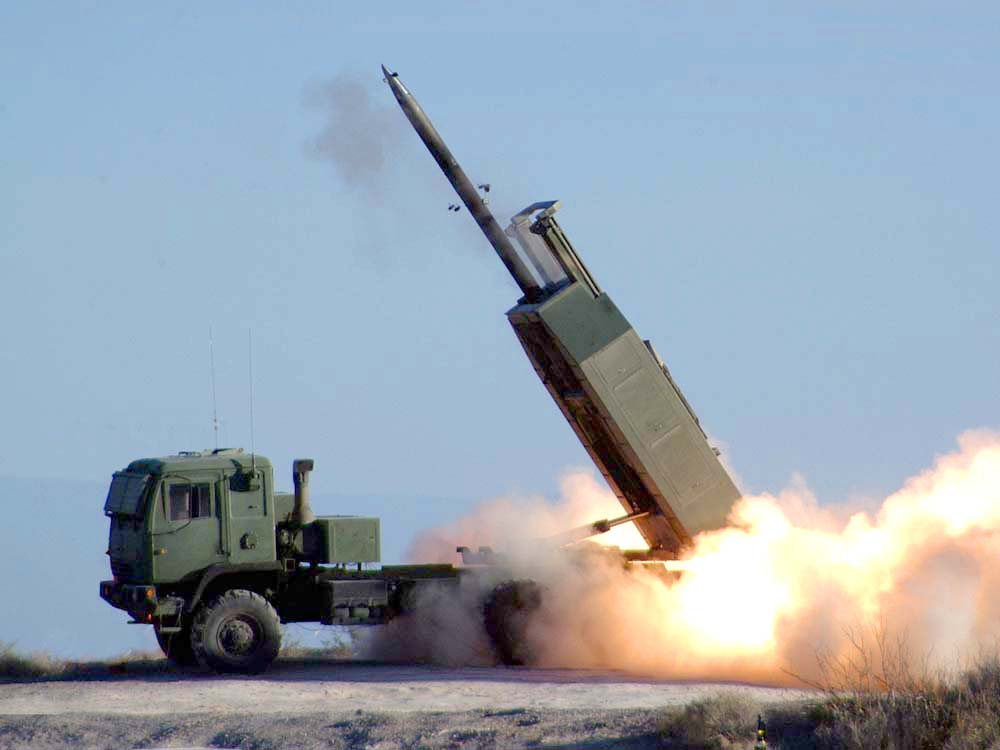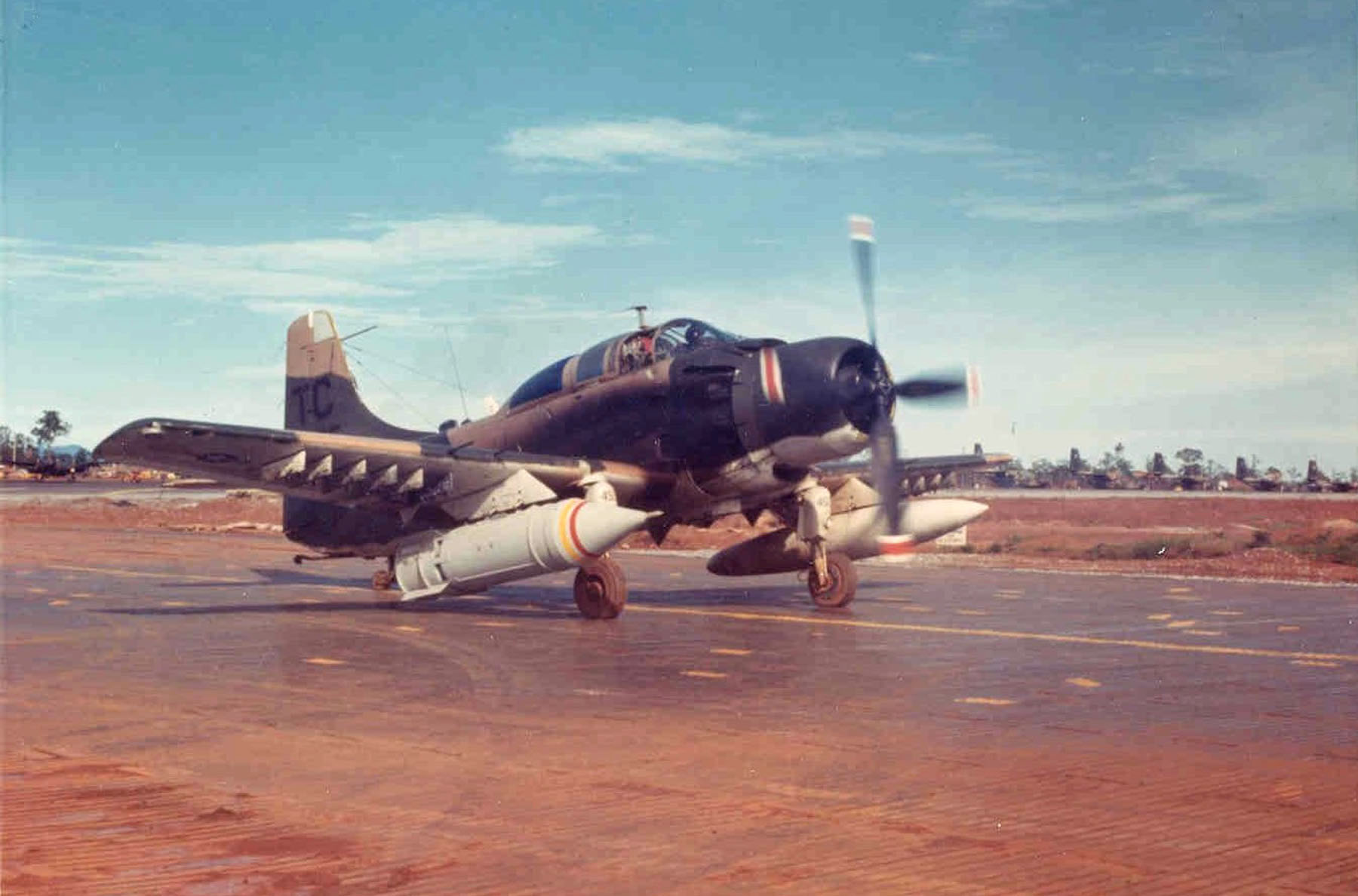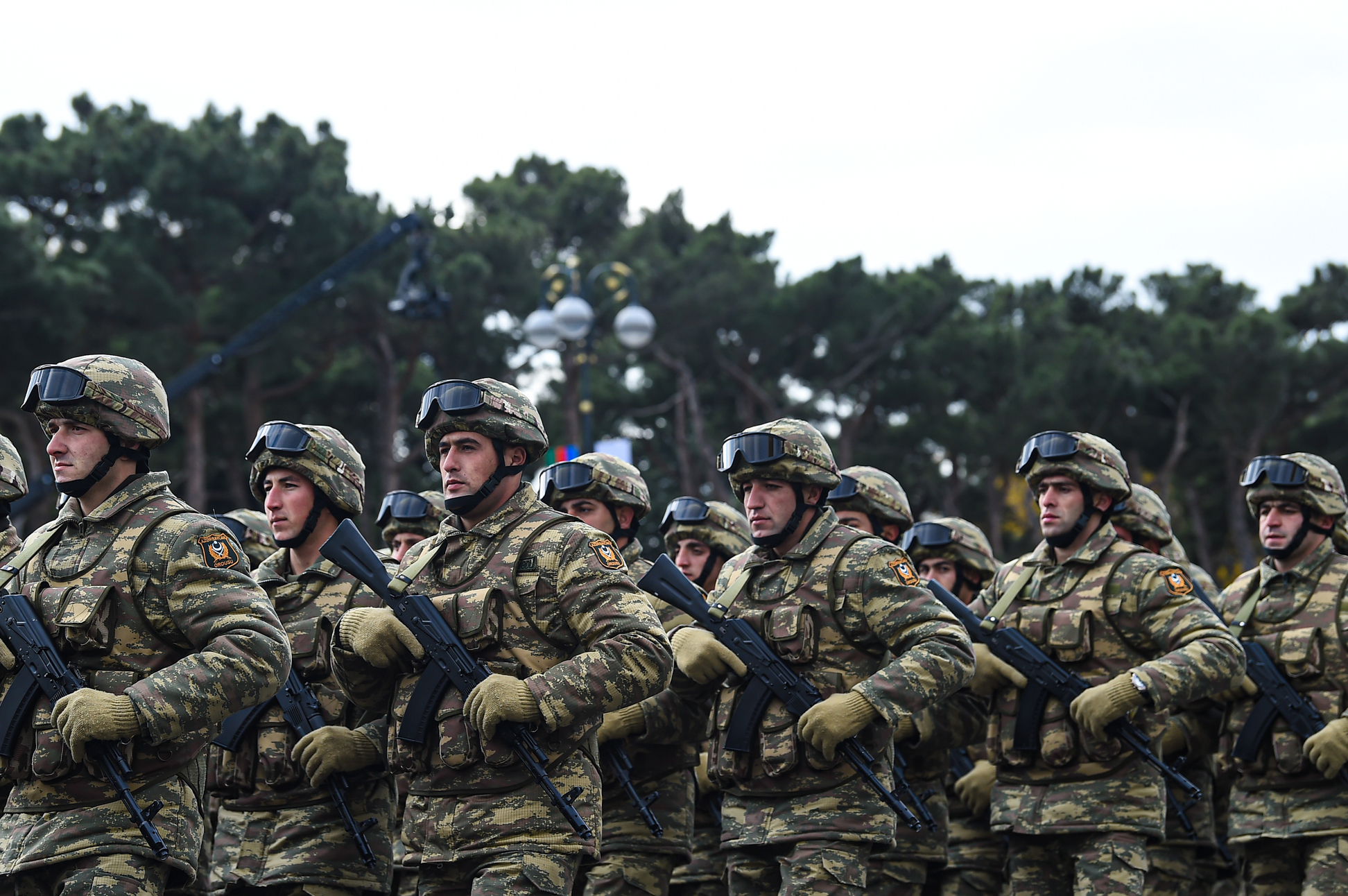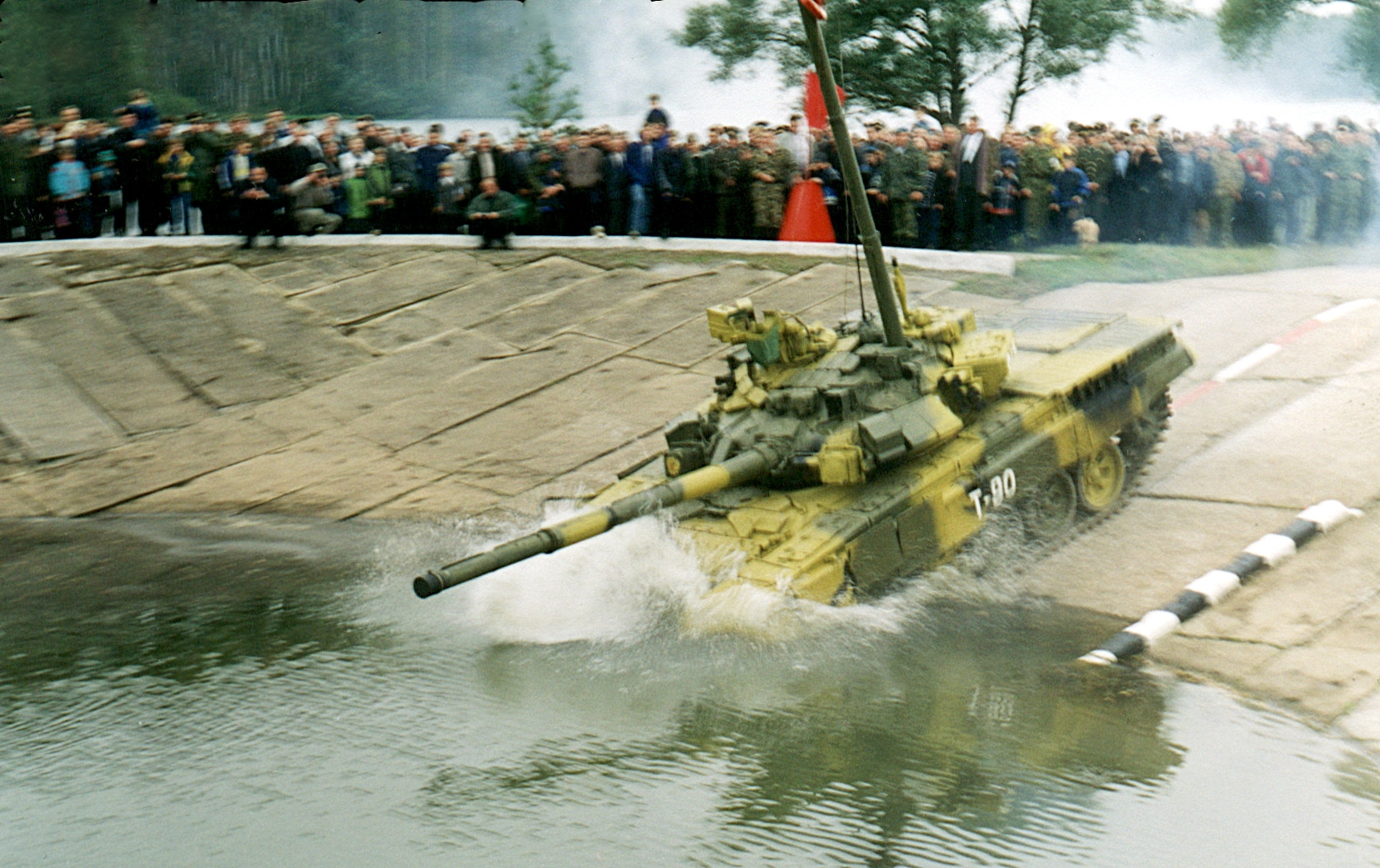|
TOS-1A
TOS-1 Buratino (, Heavy Flamethrower System) is a Soviet 220 mm 30-barrel (original system, Object 634 or TOS-1M) or 24-barrel (Object 634B or TOS-1A Solntsepyok) multiple rocket launcher capable of using thermobaric warheads, mounted on a T-72 / T-90 tank chassis. TOS-1 was designed to attack enemy fortified positions and lightly armored vehicles and transports, particularly in open terrain. The system’s first combat tests took place in 1988 and 1989 in the Panjshir Valley during the Soviet–Afghan War. The TOS-1 was shown for the first time in public in 1999 in Omsk. TOS-1 is not assigned to the artillery units of the Russian Armed Forces but is found in Russian NBC Protection Troops. Development The idea of a heavy short-range MLRS to launch rockets equipped with incendiary and thermobaric warheads arose in the late 1970s. The combat system consisting of the combat vehicle, rockets, and loading vehicle was developed in early 1980s at KBTM in Omsk and was named TOS ... [...More Info...] [...Related Items...] OR: [Wikipedia] [Google] [Baidu] |
Russian NBC Protection Troops
__NOTOC__ The Troops of Radiological, Chemical and Biological Defence of the Russian Armed Forces () are an organisation designed to reduce the losses of the Russian Ground Forces, Ground Forces and ensuring their combat tasks assigned during operations in conditions of Weapon of mass destruction, radioactive, chemical and biological contamination, as well as at enhancing their survivability and protection against high-precision and other weapons. History In 1944, the Red Army's Chemical Troops had 19 brigades (14 technical and five chemical protection). After the end of World War II, most of them were disbanded. General Major Vladimir Pikalov (promoted to Colonel General by 1975) commanded the Chemical Troops of the Ministry of Defence from March 1968 to December 1988. He was in charge of the specialised military units at the site of the Chernobyl Nuclear Power Plant Chernobyl disaster, disaster. Pikalov arrived at the scene on the afternoon of 26 April 1986, and assumed comm ... [...More Info...] [...Related Items...] OR: [Wikipedia] [Google] [Baidu] |
Multiple Rocket Launcher
A multiple rocket launcher (MRL) or multiple launch rocket system (MLRS) is a type of rocket artillery system that contains multiple rocket launcher, launchers which are fixed to a single weapons platform, platform, and shoots its rocket (weapon), rocket ordnance in a fashion similar to a volley gun. Rockets are self-propelled in flight and have different capabilities than conventional artillery shell (projectile), shells, such as longer effective range, lower recoil, typically considerably higher payload than a similarly sized gun artillery platform, or even carrying multiple warheads. Unguided rocket artillery is notoriously inaccurate and slow to reload compared to gun artillery. A multiple rocket launcher helps compensate for this with its ability to launch multiple rockets in rapid succession, which, coupled with the large blast radius, kill zone of each warhead, can easily deliver saturation fire over a target area. However, modern rockets can use GPS or inertial guidance t ... [...More Info...] [...Related Items...] OR: [Wikipedia] [Google] [Baidu] |
Thermobaric Weapon
A thermobaric weapon, also called an aerosol bomb, or a vacuum bomb, is a type of explosive munition that works by dispersing an aerosol cloud of gas, liquid or powdered explosive. The fuel is usually a single compound, rather than a mixture of multiple substances. Many types of thermobaric weapons can be fitted to hand-held launchers, and can also be launched from airplanes. Terminology The term ''thermobaric'' is derived from the Greek words for 'heat' and 'pressure': ''thermobarikos'' (θερμοβαρικός), from ''thermos'' (θερμός) 'hot' + ''baros'' (βάρος) 'weight, pressure' + suffix ''-ikos'' (-ικός) '-ic'. Other terms used for the family of weapons are high-impulse thermobaric weapons, heat and pressure weapons, vacuum bombs, and fuel-air explosives (FAE). Mechanism File:Dust explosion 00.jpg, Experimental setup File:Dust explosion 01.jpg, Finely-ground flour is dispersed File:Dust explosion 02.jpg, Cloud of flour is ignited File:Dust explosion 03. ... [...More Info...] [...Related Items...] OR: [Wikipedia] [Google] [Baidu] |
Multiple Rocket Launcher
A multiple rocket launcher (MRL) or multiple launch rocket system (MLRS) is a type of rocket artillery system that contains multiple rocket launcher, launchers which are fixed to a single weapons platform, platform, and shoots its rocket (weapon), rocket ordnance in a fashion similar to a volley gun. Rockets are self-propelled in flight and have different capabilities than conventional artillery shell (projectile), shells, such as longer effective range, lower recoil, typically considerably higher payload than a similarly sized gun artillery platform, or even carrying multiple warheads. Unguided rocket artillery is notoriously inaccurate and slow to reload compared to gun artillery. A multiple rocket launcher helps compensate for this with its ability to launch multiple rockets in rapid succession, which, coupled with the large blast radius, kill zone of each warhead, can easily deliver saturation fire over a target area. However, modern rockets can use GPS or inertial guidance t ... [...More Info...] [...Related Items...] OR: [Wikipedia] [Google] [Baidu] |
Soviet Union
The Union of Soviet Socialist Republics. (USSR), commonly known as the Soviet Union, was a List of former transcontinental countries#Since 1700, transcontinental country that spanned much of Eurasia from 1922 until Dissolution of the Soviet Union, it dissolved in 1991. During its existence, it was the list of countries and dependencies by area, largest country by area, extending across Time in Russia, eleven time zones and sharing Geography of the Soviet Union#Borders and neighbors, borders with twelve countries, and the List of countries and dependencies by population, third-most populous country. An overall successor to the Russian Empire, it was nominally organized as a federal union of Republics of the Soviet Union, national republics, the largest and most populous of which was the Russian SFSR. In practice, Government of the Soviet Union, its government and Economy of the Soviet Union, economy were Soviet-type economic planning, highly centralized. As a one-party state go ... [...More Info...] [...Related Items...] OR: [Wikipedia] [Google] [Baidu] |
Army2016-487
An army, ground force or land force is an armed force that fights primarily on land. In the broadest sense, it is the land-based military branch, service branch or armed service of a nation or country. It may also include aviation assets by possessing an army aviation component. Within a national military force, the word army may also mean a field army. Definition In some countries, such as France and China, the term "army", especially in its plural form "armies", has the broader meaning of armed forces as a whole, while retaining the colloquial sense of land forces. To differentiate the colloquial army from the formal concept of military force, the term is qualified, for example in France the land force is called , meaning Land Army, and the air and space force is called , meaning Air and Space Army. The naval force, although not using the term "army", is also included in the broad sense of the term "armies" — thus the French Navy is an integral component of the collective ... [...More Info...] [...Related Items...] OR: [Wikipedia] [Google] [Baidu] |
Russian Armed Forces
The Armed Forces of the Russian Federation, commonly referred to as the Russian Armed Forces, are the military of Russia. They are organized into three service branches—the Russian Ground Forces, Ground Forces, Russian Navy, Navy, and Russian Aerospace Forces, Aerospace Forces—two independent combat arms (the Strategic Rocket Forces and Russian Airborne Forces, Airborne Forces), and the Special Operations Forces (Russia), Special Operations Forces Command. The Russian Armed Forces are the List of countries by number of military and paramilitary personnel, world's fifth largest military force, with about one million Active duty, active-duty personnel and close to two million Military reserve force, reservists. They maintain the Russia and weapons of mass destruction, world's largest stockpile of nuclear weapons, possess the world's second-largest fleet of ballistic missile submarines, and are the only armed forces outside the United States Armed Forces, United States and Pe ... [...More Info...] [...Related Items...] OR: [Wikipedia] [Google] [Baidu] |
Omsk
Omsk (; , ) is the administrative center and largest types of inhabited localities in Russia, city of Omsk Oblast, Russia. It is situated in southwestern Siberia and has a population of over one million. Omsk is the third List of cities and towns in Russia by population, largest city in Siberia after Novosibirsk and Krasnoyarsk, and the twelfth-largest city in Russia. It is an important transport node, serving as a train station for the Trans-Siberian Railway and as a staging post for the Irtysh, Irtysh River. During the Russian Empire, Imperial era, Omsk was the seat of the Governor General of Western Siberia and, later, of the Governor-Generalship of the Steppes, Governor General of the Steppes. For a brief period during the Russian Civil War in 1918–1920, it served as the capital of the anti-Bolshevik Russian State (1918–1920), Russian State and held the imperial gold reserves. Omsk serves as the episcopal see of the bishop of Omsk and Tara, Omsk Oblast, Tara, as well ... [...More Info...] [...Related Items...] OR: [Wikipedia] [Google] [Baidu] |
Chassis
A chassis (, ; plural ''chassis'' from French châssis ) is the load-bearing framework of a manufactured object, which structurally supports the object in its construction and function. An example of a chassis is a vehicle frame, the underpart of a motor vehicle, on which the body is mounted; if the running gear such as wheels and transmission, and sometimes even the driver's seat, are included, then the assembly is described as a rolling chassis. Examples Vehicles In the case of vehicles, the term ''rolling chassis'' means the frame plus the "running gear" like engine, transmission, drive shaft, differential, and suspension. The "rolling chassis" description originated from assembly production when an integrated chassis "rolled on its own tires" just before truck bodies were bolted to the frames near the end of the line. An underbody (sometimes referred to as " coachwork"), which is usually not necessary for the integrity of the structure, is built on the chassis to c ... [...More Info...] [...Related Items...] OR: [Wikipedia] [Google] [Baidu] |
T-90
The T-90 is a third-generation Russian main battle tank developed from, and designed to replace the T-72. It uses a 125mm 2A46 smoothbore main gun, the 1A45T fire-control system, an upgraded engine, and gunner's thermal sight. Standard protective measures include a blend of steel and composite armour, smoke grenade dischargers, Kontakt-5 explosive reactive armour (ERA) and the Shtora infrared anti-tank guided missile (ATGM) jamming system. The T-90 was designed and built by Uralvagonzavod, in Nizhny Tagil, Russia. It entered service with the Russian army in 1992. Development The T-90 has its origins in a Soviet-era program aimed at developing a replacement for the T-64, T-72 and T-80 series of main battle tanks (MBT). The T-72 platform was selected as the basis for the new generation of tank owing to its cost-effectiveness, simplicity and automotive qualities. The Kartsev-Venediktov Design Bureau from Nizhny Tagil was responsible for the design work and prepared tw ... [...More Info...] [...Related Items...] OR: [Wikipedia] [Google] [Baidu] |
T-72
The T-72 is a family of Soviet Union, Soviet main battle tanks that entered production in 1973. The T-72 was a development based on the T-64 using thought and design of the previous Object 167M. About 25,000 T-72 tanks have been built, and refurbishment has enabled many to remain in service for decades. It has been widely exported and has seen service in 40 countries and in numerous conflicts. The Russian T-90 introduced in 1992 and the Chinese Type 99 tank, Type 99 are further developments of the T-72. Production and development of various modernized T-72 models continues today. Development Development from the T-64 The T-72 was a product of a rivalry between design teams. Kharkiv Morozov Machine Building Design Bureau, Morozov KB was led by Alexander Alexandrovich Morozov, Alexander Morozov in Kharkiv. Uralvagonzavod, Uralvagon KB was led by Leonid Kartsev in Nizhny Tagil. To improve on the T-62, two designs based on the tank were tested in 1964: Nizhny Tagil's Object 167 (T- ... [...More Info...] [...Related Items...] OR: [Wikipedia] [Google] [Baidu] |








